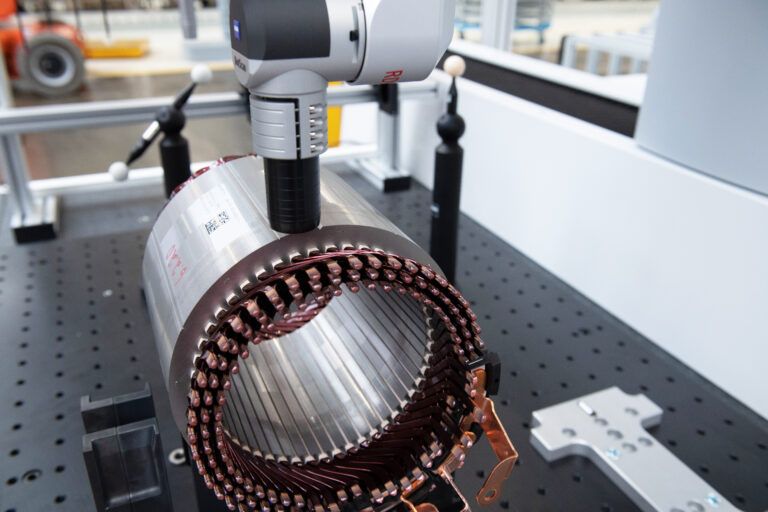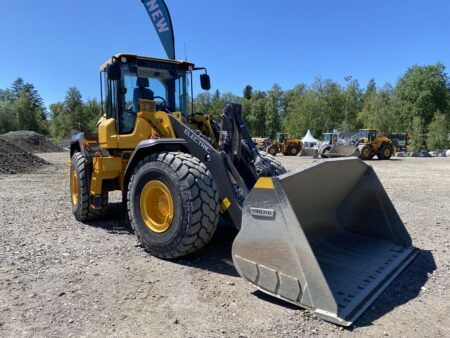Zeiss and VW have been working together to develop a new measuring solution for hairpin stators, which are used for the brand’s ID.3 electric vehicle.
The VW ID.3 is the first ever vehicle to be designed purely as an electric car. The essential components of the electric drive are produced at the Volkswagen components plant in Salzgitter. For the stator, VW has opted for an innovative design using hairpin technology.

“This approach enables high-volume series production, and it also means the engine has more power, while being significantly lighter,“ explained Philip Kurz, who is responsible for engine planning and testing at VW. However, there remains the challenge of quality assurance – because the physical properties of the hairpins push the boundaries of the measuring methods traditionally used in engine construction. This is why over the past year Zeiss has been working with VW to develop a measuring solution which enables the automaker to manufacture electric cars in large-scale series production.
The hairpins in the stator of the new electric drive, made from coated copper, replace the traditional copper wire coil. Pascal Schmidt, who is part of the quality assurance team, explains why this is too much for traditional measuring technology to cope with: ”Copper is easily deformed, which is why we can‘t use tactile methods. Also, it is shiny and semi-transparent, which makes it difficult for optical sensors to detect.“ On top of that, the form of the finished hairpins does not match the form of the installation position. And, with over 100 integrated hairpins, the winding head needs to be fully scanned by the sensors in order to ensure that the hairpins aren’t touching the engine housing. VW also needed to develop an efficient measuring strategy which meets all of the safety and quality requirements for the electric drive.
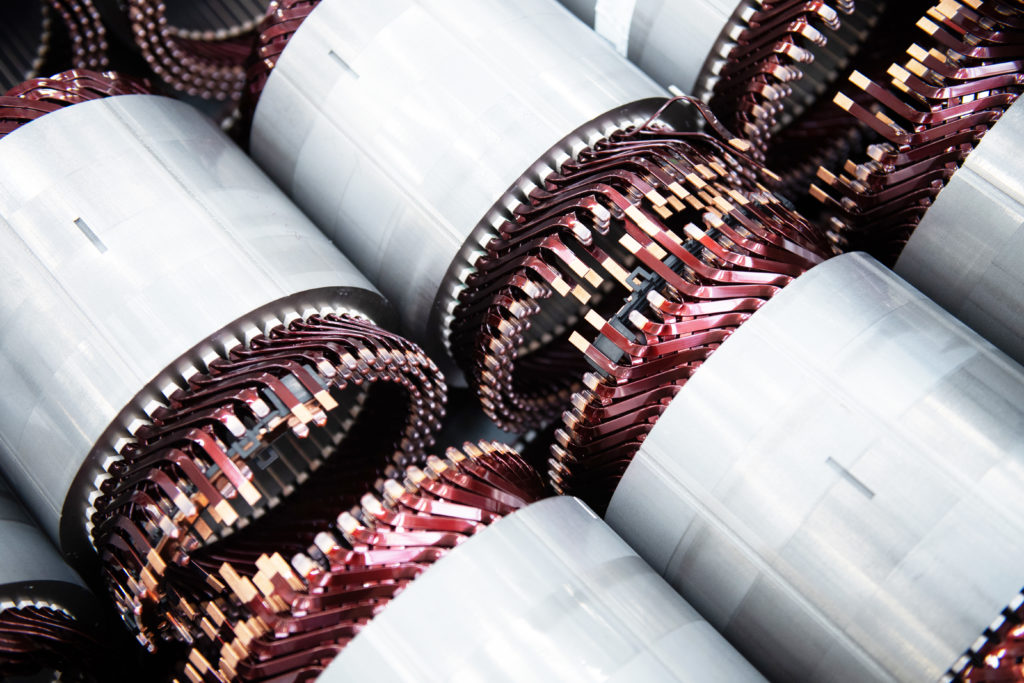
At the start of 2019, Zeiss and VW began a collaborative project with the aim of finding solutions to these challenges. Kurz explains: ”Once we had defined our sensor requirements in-house, it became clear that the Zeiss PRISMO multisensor coordinate measuring machine was the ideal solution.“ In the chosen configuration, the coordinate measuring machine comes fitted with the Zeiss VAST XXT tactile scanning measuring head, the Zeiss LineScan optical form sensor and the Zeiss DotScan chromatic white light sensor, as well as a rotating swivel unit.
Where possible VW prefers to use the tactile procedure for measuring the bundle of laminations on the stator, as this is the most precise method. Zeiss LineScan is used to check the winding head, as this generates digital data in the form of a point cloud to enable calibration with the CAD model. The hairpins are measured using Zeiss DotScan. To check the individual hairpins prior to installation in the stator, Zeiss developed a fixture system in which the hairpins can be inserted for measurement in a configuration that matches how they will ultimately be installed in the stator. Also, for the lamination bundle, ZEISS developed a clamping device which enables the bundle to be secured for reproducible tactile measurement.
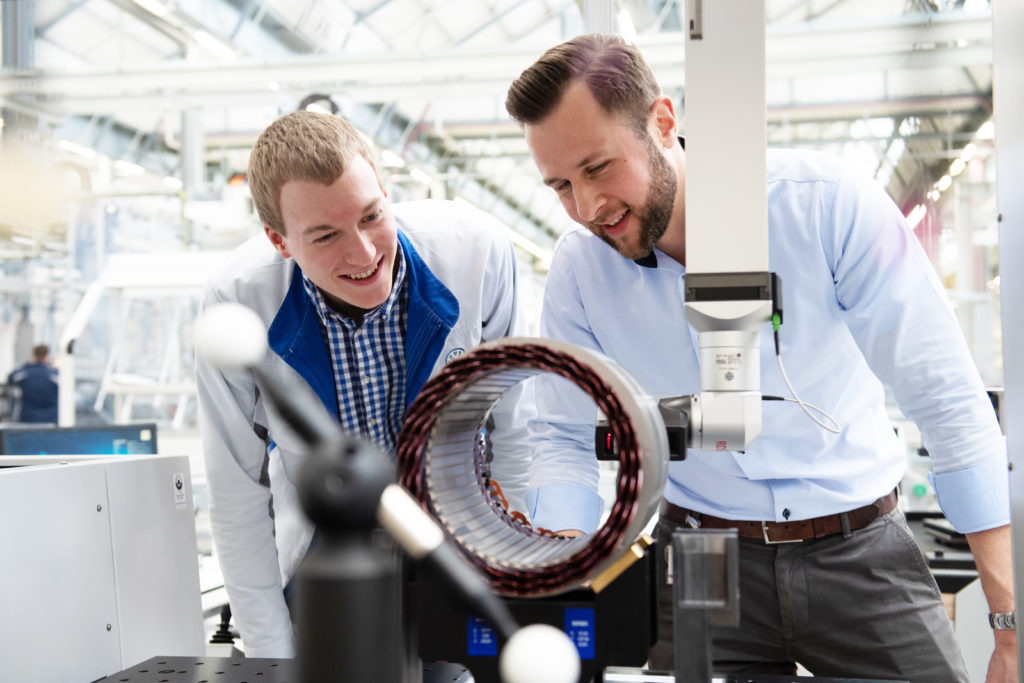
As it is not the measuring engineers themselves but the production workers who will conduct random checks, user-friendliness was also an important factor. And in Pascal Schmidt‘s opinion, the best conditions are in place to meet this requirement: ”With CALYPSO, Zeiss offers a clear interface with images and text which allows the operator to select what he wants to do. The operator inserts the part that is to be measured, enters which machine the part is from, selects the measurement program, and then the rest runs automatically. There‘s virtually nothing that can go wrong.“
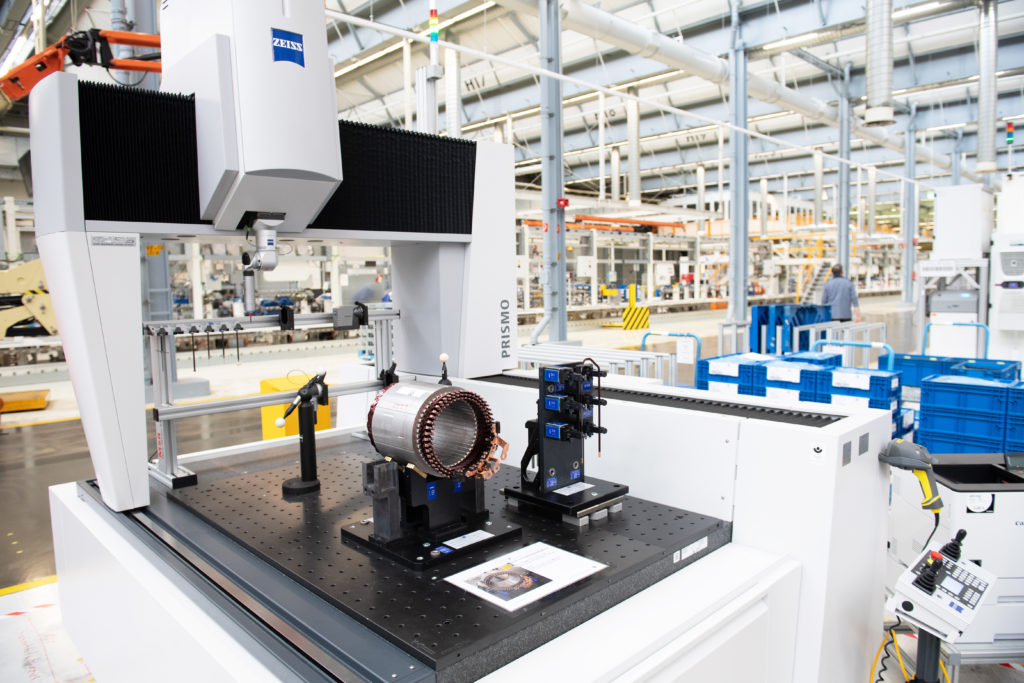
And Zeiss PiWeb is also convincing with its ability to generate meaningful measurement reports quickly and easily, and to clearly visualize the measurement data – including with CAD views, form plots, false color displays and histograms. Philip Kurz is delighted with the solution package: “In our planning at VW, we‘re never just looking for a specific measurement device, but always for a comprehensive measuring solution. Zeiss understands our products and our measuring needs, and is able to develop within its portfolio the ideal solution that best matches our requirements.”
